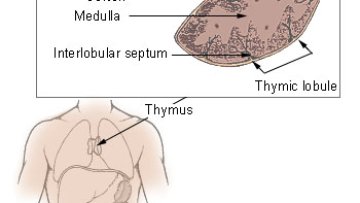15:45
Boundaries and 3-dimensional topological field theories
Abstract
Just as differential equations often boundary conditions of various types, so too do quantum field theories often admit boundary theories. I will explain these notions and then discuss a theorem proved with Constantin Teleman, essentially characterizing certain 3-dimensional topological field theories which admit nonzero boundary theories. One application is to gapped systems in condensed matter physics.
16:00
A Minkowski problem and the Brunn-Minkowski inequality for nonlinear capacity
Abstract
The classical Minkowski problem consists in finding a convex polyhedron from data consisting of normals to their faces and their surface areas. In the smooth case, the corresponding problem for convex bodies is to find the convex body given the Gauss curvature of its boundary, as a function of the unit normal. The proof consists of three parts: existence, uniqueness and regularity.
In this talk, we study a Minkowski problem for certain measure, called p-capacitary surface area measure, associated to a compact convex set $E$ with nonempty interior and its $p-$harmonic capacitary function (solution to the p-Laplace equation in the complement of $E$). If $\mu_p$ denotes this measure, then the Minkowski problem we consider in this setting is that; for a given finite Borel positive measure $\mu$ on $\mathbb{S}^{n-1}$, find necessary and sufficient conditions for which there exists a convex body $E$ with $\mu_p =\mu$. We will discuss the existence, uniqueness, and regularity of this problem which have deep connections with the Brunn-Minkowski inequality for p-capacity and Monge-Amp{\`e}re equation.
16:00
Improved convergence of low entropy Allen-Cahn flows to mean curvature flow and curvature estimates
Abstract
The parabolic Allen-Cahn equations is the gradient flow of phase transition energy and can be viewed as a diffused version of mean curvature flows of hypersurfaces. It has been known by the works of Ilmanen and Tonegawa that the energy densities of the Allen-Cahn flows converges to mean curvature flows in the sense of varifold and the limit varifold is integer rectifiable. It is not known in general whether the transition layers have higher regularity of convergence yet. In this talk, I will report on a joint work with Huy Nguyen that under the low entropy condition, the convergence of transition layers can be upgraded to C^{2,\alpha} sense. This is motivated by the work of Wang-Wei and Chodosh-Mantoulidis in elliptic case that under the condition of stability, one can upgrade the regularity of convergence.
Oxford Mathematicians occasionally have time to write and edit books. Their range of topics - from Topology and Geometry to Stochastic Methods and Chaos via the International Congress of 1936 and a candid account of a life escaping from poverty and living with polio - is a testament to how much maths reaches in to our lives. Some are for specialists, some for aspiring specialists, but all give you a flavour of the mathematical life.
Oxford Mathematician Sam Palmer tackles a crucial issue in our understanding of the risks of serious diseases such as cancer.
Ribbons and moduli spaces of stable pairs
Abstract
This talk aims to provide a simple introduction on how to probe the
explicit geometry of certain moduli schemes arising in enumerative
geometry. Stable pairs, introduced by Pandharipande and Thomas in 2009, offer a curve-counting theory which is tamer than the Hilbert scheme of
curves used in Donaldson-Thomas theory. In particular, they exclude
curves with zero-dimensional or embedded components.
Ribbons are non-reduced schemes of dimension one, whose non-reduced
structure has multiplicity two in a precise sense. Following Ferrand, Banica, and Forster, there are several results on how to construct
ribbons (and higher non-reduced structures) from the data of line
bundles on a reduced scheme. With this approach, we can consider stable
pairs whose underlying curve is a ribbon: the remaining data is
determined by allowing devenerations of the line bundle defining the
double structure.











